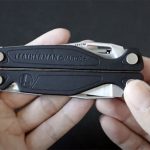Delta Apparel reported a loss in the fiscal second quarter ended April 1 as elevated inventory levels at the mass channel continue to impact its Delta Direct business. Sales declined 16.2 percent as a gain of over 16 percent at its Salt Life brand was offset by a 20.8 percent drop at its Delta Group segment.
Chairman and Chief Executive Officer Robert W. Humphreys commented, “Our second quarter performance highlights the durability and inherent advantages in our multi-market strategy during uneven demand cycles. We achieved double-digit sales growth across three of our five go-to-market channels and saw strength in areas where we provide decorated ‘consumer ready’ products directly to end-users or close to the point-of-sale.
Our Salt Life business continues to capitalize on the growing popularity of its lifestyle brand domestically and internationally, achieving both record sales and profitability during the quarter. The growth at Salt Life included double-digit increases across its branded retail and eCommerce channels as well as healthy growth at wholesale. Salt Life also expanded the scope of its license portfolio through a new partnership in the multi-billion-dollar home furnishings market that we expect to generate significant future royalty revenue.
Our DTG2Go business also continued its high growth trend during the quarter with nearly 20 percent topline expansion over the prior year. We continue to see a multi-decade growth runway in digital print as players in the traditional decorated apparel markets increasingly recognize its speed-to-customer and other advantages. The benefits of on-demand strategies in reducing inventory investment are even more apparent in the current high interest rate environment.
The apparel markets remain dynamic. As expected, our Delta Direct and Global Brands channels were impacted by the well-publicized high inventory levels and associated slower demand in the supply chains they serve, while our Retail Direct channel saw double-digit sales growth in the quarter.
Humphreys concluded, “We remain keenly focused on managing our working capital, reducing inventory and debt levels, and leveraging the many opportunities across our business to provide higher-margin and quicker-turn ‘consumer ready’ products. Executing on these initiatives and working through the remainder of last year’s high-price cotton inventory sets the stage for improved operating results as we move through the second half of our fiscal year and positions us to capitalize on accelerations in demand.”
For the second quarter ended April 1, 2023:
Net sales were $110.3 million compared to prior year second quarter net sales of $131.7 million. Salt Life Group segment net sales grew over 16 percent to $19.0 million from prior year second quarter net sales of $16.4 million. Net sales in the Delta Group segment were $91.3 million compared to $115.3 million in the prior year second quarter.
Gross margins were 14.7 percent compared to 25.5 percent in the prior year, driven by production curtailments intended to match manufacturing output with market demand as well as inflationary cotton and other raw material costs.
Selling, general, and administrative expenses (SG&A) were $19.3 million, or 17.5 percent of sales, compared to $19.7 million, or 15.0 percent of sales, in the prior year second quarter. The increase in SG&A as a percentage of sales was driven by the further expansion of Salt Life’s branded retail store footprint and the deleveraging effect of overall lower sales relative to the prior year period.
Operating income declined year-over-year from $14.3 million, or 10.9 percent of sales, to an operating loss of $5.4 million, or (4.9 percent) of sales.
Net income declined from $10.1 million, or $1.44 per diluted share, to a loss of $7.0 million, or ($1.00) per diluted share.
Net inventory as of April 1, 2023, was $243.2 million, a sequential decrease of $15.7 million from December 2022 and a year-over-year increase of $45.5 million from March 2022. The decrease from December 2022 stemmed primarily from efforts to manage inventory levels through production curtailments intended to match manufacturing output with demand.
Total net debt, including capital lease financing and cash on hand, was $194.3 million as of April 1, 2023, an increase of $9.1 million from December 2022 and $40.9 million from March 2022. Cash on hand and availability under the company’s U.S. revolving credit facility totaled $12.8 million as of April 1, 2023, a decrease of $14.4 million from December 2022 and $22.4 million from March 2022, with the decrease from December 2022 principally driven by investments in the business to support working capital needs.
The company spent approximately $2.0 million on capital expenditures during the second quarter compared to $10.5 million during the prior year second quarter, with the expenditures focused on Salt Life retail store build-outs as well as facility, information technology and manufacturing enhancements.















